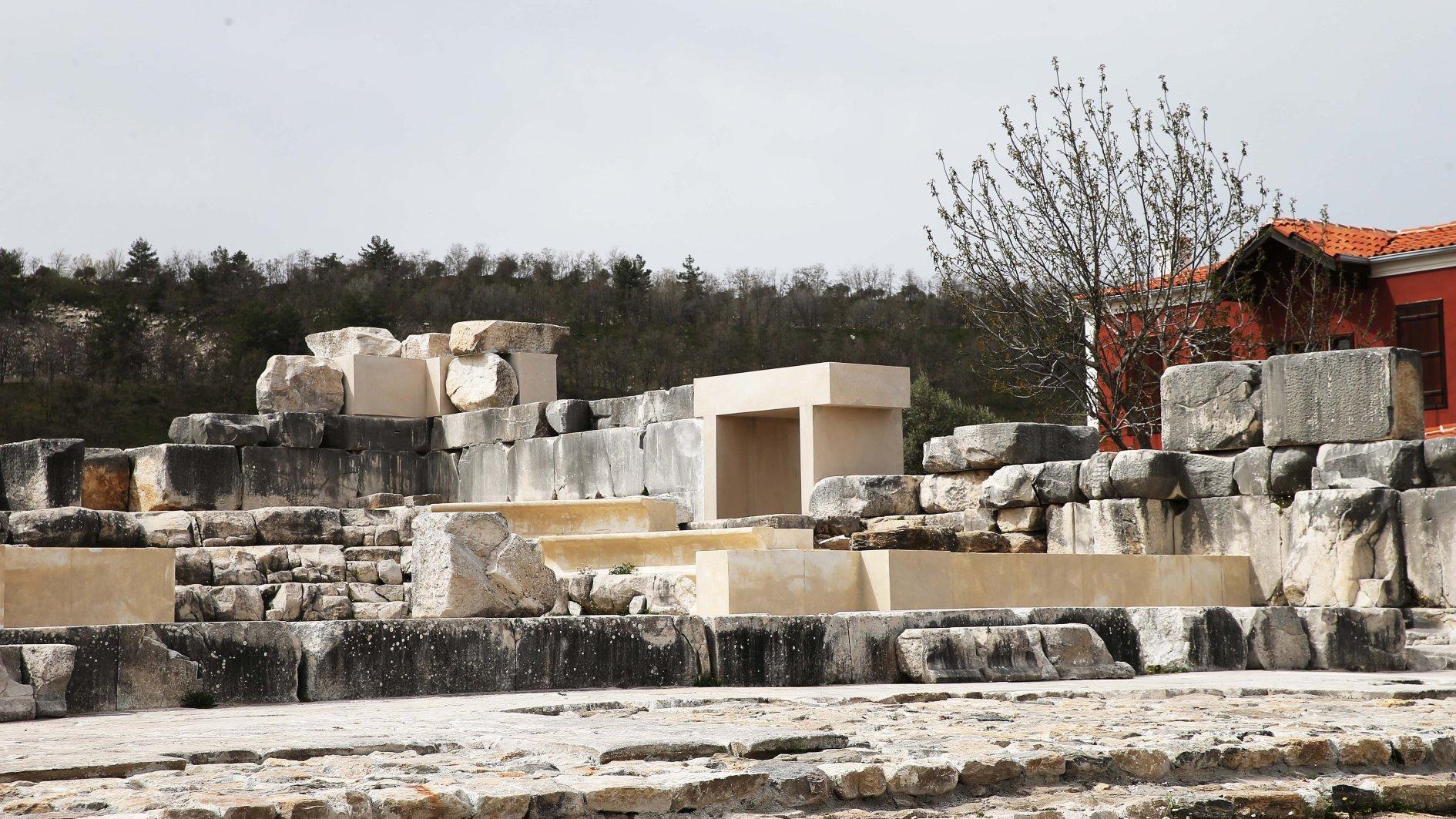Ancient assembly hall restored to its former glory
MUĞLA

Restoration works continue as part of the “Heritage for the Future” project to return the 2,200-year-old assembly hall of the ancient city of Stratonikeia, known as the “city of gladiators,” in Muğla’s Yatağan district, to its former glory.
Listed on the UNESCO World Heritage Tentative List, Stratonikeia is considered one of the world’s largest marble cities and contains traces of the Hellenistic, Roman, Byzantine, Beylik, Ottoman and Republican periods.
Professor Bilal Söğüt, head of the Stratonikeia and Lagina Excavation Team, told the state-run Anadolu Agency that excavation and restoration work in the ancient city continues throughout the year.
Söğüt noted that current efforts focus on completing the restoration project of the assembly hall, one of the city’s most central structures.
“There’s a calendar made by the ancient philosopher Menippos on the building. Furthermore, from the Roman period, there are lists of all goods sold and services offered in Stratonikeia, along with their maximum prices. The building is significant both as an assembly hall and for the inscriptions from both the ancient and Ottoman periods found on it,” he said.
Stating that the area where the assembly hall is located reflects multiple historical periods simultaneously, Söğüt said that they completed the steps in the infrastructure in the section with the inscriptions at the northern entrance and fully reerected a column measuring nearly nine meters in height.
Söğüt said their goal is to allow visitors to see the grandeur of the assembly hall as it was in ancient times, including its seating rows, two entrance doors, and the full height and majesty of its columns.
Noting that their aim to preserve and exhibit structures and architectural elements in their original locations as a legacy for future generations, Söğüt said, “We only carry out restoration where about 90 percent of the original material is available. That was the case here. To preserve the steps of the structure, we added new supports to the edges. The assembly hall’s north and south entrances have been restored in their original locations and now reflect their ancient splendor. We also completed the column drums with marble.”
Söğüt explained that with this restoration, they hope visitors can sit on the steps once used by ancient lawmakers and relax while observing the partially reconstructed structure.
In addition to the restoration work, excavations are also being carried out in the area.
“In the excavations on the southern side of the assembly hall, we revealed how the portico [a covered and columned open gallery] was arranged around the southern wall of the hall. We also uncovered earlier walls behind it, along with Hellenistic period walls. Excavation and restoration continue throughout various parts of the city,” he said.
Söğüt noted that the assembly hall once symbolized Stratonikeia’s status as a city-state. He added that inscriptions can be found on different parts of the building — Latin on the outer face of the north wall, Greek on the inner face of the same wall and Ottoman Turkish on the outer face of the south wall.
















